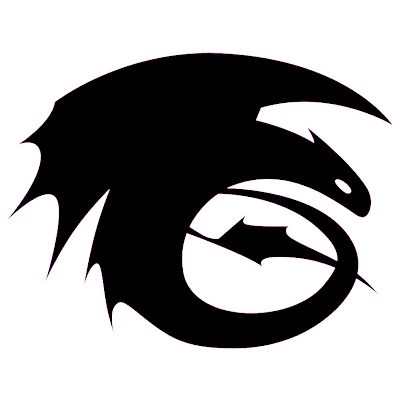A dragon is a legendary creature, typically with serpentine or reptilian traits, that feature in the myths of many cultures. There are two distinct cultural traditions of dragons: the European dragon, derived from European folk traditions and ultimately related to Greek and Middle Eastern mythologies, and the Chinese dragon, with counterparts in Japan, Korea and other East Asian countries. Dragons are usually shown in modern times with a body like a huge lizard, or a snake
with two pairs of lizard-type legs, and able to emit fire from their mouths. The European dragon has bat-type wings growing from its back. A dragon-like creature with no front legs is known as a wyvern. Following discovery of how pterosaurs walked on the ground, some dragons have been portrayed without front legs and using the wings as front legs pterosaur-fashion when on the ground.
In Western folklore, dragons are usually portrayed as evil, with the exceptions mainly in Welsh folklore and modern fiction. In the modern period the dragon is typically depicted as a huge fire-breathing, scaly and horned dinosaur-like creature, with leathery wings, with four legs and a long muscular tail. It is sometimes shown with feathered wings, crests, fiery manes, ivory spikes running down its spine and various exotic colorations.The Chinese dragon is a mythical creature. Long a potent symbol of auspicious power in Chinese folklore and art, it is the embodiment of the concept of yang and associated with the weather and water as the bringer of rain.The dragon is sometimes in the West viewed as a national emblem of China. However, this usage within both the People's Republic of China and the Republic of China on Taiwan is extremely rare, both because the dragon has monarchist connotations which run counter to recent Chinese ideologies and because the dragon has aggressive, warlike connotations which Chinese governments dislike. It is for the latter reason that the giant panda is far more often used within China as a national emblem than the Chinese dragon.The dragon is one of the 12 Chinese zodiacs which is used to designate year in the Chinese calendar. It is thought that each animal is associated certain personality traits. (see Dragon (Zodiac)).The dragon was a symbol for the emperor in many Chinese dynasties. The imperial throne was called the dragon throne. During the late Qing dynasty, the dragon was even adopted as the national flag. It was an capital offense for commoners to wear clothes with a dragon symbol.
The dragons are believed to be the rulers of the seas. They can show themselves as water spouts (tornado or twister over water).There are four dragons, one representing each sea. For instance the Dragon King of the East, Dragon King of the West, and so forth.
-

Dragon Classes (Franchise) -
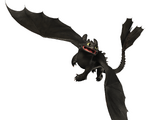
Toothless (Franchise) -
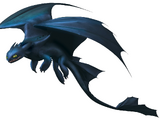
Night Fury -
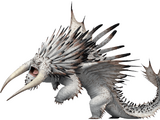
Bewilderbeast -
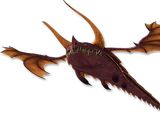
Shellfire -

Red Death -
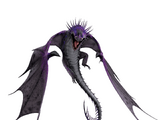
Skrill -
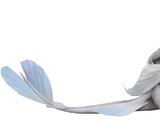
Light Fury
All items (1350)
- Abomibumble
- Aggro
- Alligatiger
- Almondine
- Alpha Dragon
- Alpha Gembreaker
- Alpha Shadow
- Alpha Skrill
- Ambered Nadder
- Antiquarian Accumulator
- Anveil
- Apneatic Archechoke
- Arcane Kulingbiter
- Arctic Rumblehorn
- Armorwing
- Arrogance, Innocence, and Patience
- Arsenic Adderwing
- Astrid's Monstrous Nightmare
- Auroara
- Auroch King
- Auroma
- Aurum
- Aurvandil
- Axewing
- Axewing the Second
-
Babbley
- Baby Boombacks
- Baby Dragons
- Baby Dragons / Rescue Riders
- Baby Nadder
- Baby Ramblefang
- Baby Shriekscales
- Baited Breath
- Baldreng
- Bam
- Bandit
- Barf and Belch
- Barf and Belch's Mate
- Barf and Belch's Offspring
- Bargemine
- Barklethorn
- Barrow Burrower
- Basic Brown
- Basket Case
- Battlewhip
- Bayana's Silkspanners
- Beachcomber
- Bedrock Terror
- Beezelord
- Belchfast
- Belchy
- Berg Hoarsbrumble
- Berserker Bewilderbeast
- Berubble
- Bewilderbeast
- Big Buff
- Big Snuff
- Big Spotted Gormless
- Bing
- Bisonarch
- Bitter Galeslash
- Bizarregoyle
- Blawberry
- Blazewing
- Blazing Phoenixfire
- Blazo
- Blistering Belcher
- Bloodtooth Blain
- Bloody Crocoraptor
- Bloomsang
- Blossoming Bumbershoot
- Blubberwing
- Bludcrest
- Bludgeon Knapper
- Blushing Bloomtender
- Boarcharger
- Boast-Roaster
- Bobbley
- Bog Bonestormer
- Bog-Blight
- Boiling Billows
- Boiling Bride
- Bolt & Float
- Boltbite
- Bombwelter
- Bomskewer
- Bonecrusher's Conquest
- Boneknapper
- Boneshedder
- Bonesnarl
- Bonestormer
- Bonnefire
- Book Wyrm
- Boom
- Boomback
- Borealis
- Bork Week Nadders
- Bosk Humbanger
- Boulderbrute
- Brainless Leg-Remover
- Brainpicker
- Breampunk
- Breathquencher
- Briarvane
- Brickflayer
- Brightburn
- Brightclaw
- Brisk Whisper
- Brisket, Saddle, Chuck, Rump, Loin, Scrag, Cutlet, Ham Hock, Sausages, Offal, Knuckle, and Pot Roast
- Broken Blade
- Brood-blossom
- Brooding Boltstamper
- Broodnestle
- Brush Nadder
- Brute Boneknapper
- Brute Buffalord
- Brute Skrill
- Brute Snaptrapper
- Brute Stormcutter
- Brute Timberjack
- Brute Timbertoast
- Brute-Wurst
- Bubblegill
- Bubblehorn
- Bubbley
- Budbite
- Buffalord
- Bulky Bonestormer
- Bullguard Slavedragon
- Bullheart
- Bullingdozer
- Bullpuff
- Bullrougher
- Bulwark
- Bumble
- Burjoiner
- Burlystorm
- Burnwind
- Burple
- Burrowing Slitherfang
- Bush-Wacker
- Butt and Head
- Cagecruncher
- Cantata
- Captured Changewing
- Captured Scauldron
- Cardinal Combatant
- Carnastial
- Carrier Dragon
- Catastrophic Quaken
- Caterbillar
- Cave Deathburple
- Cavern Crasher
- Cawmour
- Celestial Royalwing
- Centidile
- Champerone
- Champion Catastrophic Quaken
- Champion Triple Stryke
- Champion Windgnasher
- Changewing
- Chaperang
- Charsoul
- Chartooth
- Cheesemonger
- Chestnut Knight
- Chickenpoxer
- Chillbert
- Chillbill
- Chillblade
- Chillblaster
- Chilljill
- Chimeragon (Dawn of New Riders)
- Chimeragon (School of Dragons)
- Chimerical Chamomeleon
- Chinooker
- Chinuke
- Chompers
- Cinda
- Cinder
- Cinderoptera
- Clawlifter
- Claytrapper
- Cliff Ridgesnipper
- Cloudcarver
- Cloudjumper
- Coaldron
- Coldreign
- Coldsnap
- Color Varieties
- Color Varieties / Rescue Riders
- Colorcrunch
- Common or Garden Dragon (Books)
- Common Triple Stryke
- Coppertop
- Copsekeep
- Copyclaw
- Corroderunner
- Covecharger
